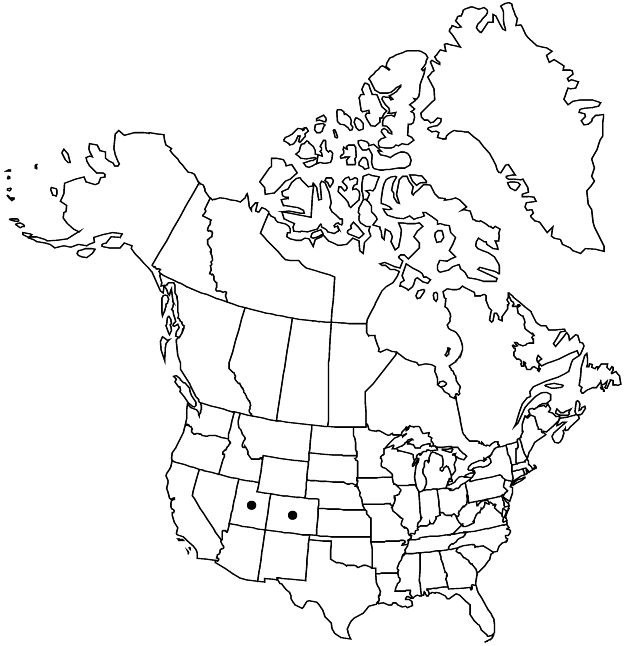Difference between revisions of "Eriogonum bicolor"
Zoë 4: 281. 1893.
FNA>Volume Importer |
FNA>Volume Importer |
(No difference)
| |
Revision as of 20:08, 24 September 2019
Subshrubs, compact, not scapose, 0.2–0.8 × 0.5–2(–3) dm, reddish- or tannish-tomentose, reddish. Stems erect to slightly spreading, often with persistent leaf bases, up to 1/4 height of plant; caudex stems compact; aerial flowering stems spreading to somewhat erect, slender, solid, not fistulose, 0.05–0.2 dm, tomentose. Leaves cauline, 1 per node or fasciculate; petiole 0.1–0.2 cm, tomentose to floccose; blade linear-oblanceolate to narrowly elliptic, 0.5–1.7(–2) × 0.1–0.2(–0.3) cm, densely white-tomentose abaxially, slightly less so and often reddish or tannish adaxially, margins revolute. Inflorescences umbellate to cymose, compact, rarely reduced to single involucre, 0.5–1 × 0.5–1.5 cm; branches dichotomous, tomentose; bracts 3, scalelike, linear, 0.7–1.3 mm. Peduncles erect, 0.1–0.3(–0.4) cm, tomentose to floccose. Involucres 1 per node, turbinate-campanulate, 2–4 × 1.5–3 mm, tomentose to floccose or glabrous; teeth 5, erect, 0.4–0.7 mm. Flowers 2.5–4(–4.5) mm; perianth white, glabrous; tepals connate proximal 1/4, dimorphic, those of outer whorl broadly obovate to nearly orbiculate, (2–)2.5–3 mm wide, those of inner whorl oblanceolate to narrowly elliptic, 1–1.5 mm wide; stamens long-exserted, 3–5 mm; filaments sparsely pilose proximally or glabrous. Achenes light brown, 3–3.5 mm, glabrous.
Phenology: Flowering Apr–Jul.
Habitat: Silty, sandy, or heavy clay washes, flats, and slopes, saltbush and blackbrush communities, juniper or pinyon-juniper woodlands
Elevation: 1300-2000(-2300) m
Discussion
Eriogonum bicolor is common from Castle Valley and the San Rafael Swells of Carbon and Emery counties, Utah, eastward to Grand Valley of Grand County, Utah, and Mesa County, Colorado. It occurs to the south in Garfield, San Juan, Sevier, and Wayne counties of Utah, especially in Canyonlands National Park and the Grand Staircase-Escalante National Monument. The species is worthy of cultivation, although being a slow-growing perennial of rather specialized soils it is a challenge. Seed germination in garden plots is reasonably successful; transplanting is difficult.
Selected References
None.
